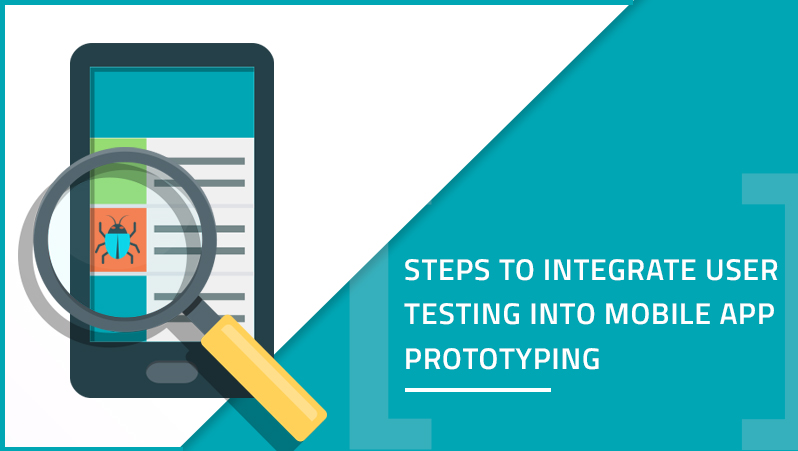It is well known that the mobile application industry is large and growing every day where only a few % of applications see success. It is a challenging task to increase app installations. Besides pulling users, it is a daunting task to make them stick towards the app after installation. On an average, approximately only 20% of the app users continue to use the app for 3 months. The majority of users do not even open the app after installation. Therefore, it is suggested, to begin with, the app prototype that can be developed using tools such as Mockflow, Invision, Balsamix, etc. Interactive prototypes serves as the best option to execute usability testing into starting stages of software development.
By running usability tests on a mobile app prototype, it is possible to overcome several challenges which software developers and designers undergo: buggy launches, last minute reworks, loss of stakeholder funds and confidence.
But by having usability testing at work, it is possible to do things right. Running interactive user tests on interactive mobile app prototypes needs a changed approach as compared to testing a software.
In this article, we have explained when, why and how you should start user testing a mobile app.
User testing pro tips
Sample users:
It is important to have the right set of target users, someone from your friends, family, colleagues who might be a potential user of the app. It is possible to get the best insights by testing on just 5 – 10 users and running several tests you can afford. We recommend to test with a smaller sample because with every increase in the sample you will find a high number of repetitious understandings and reduces the number of original understandings.
Someone to facilitate:
It means somebody with skin in user testing game. The facilitator should have sufficient knowledge about the habits of the users to recognize when to delve deeper into a problem while testing. The facilitator should manage teams of people with different views of experiences.
Test prototyping on browsers:
How to perform it?
Select the screen sequence you require to test according to your test objectives.
Develop visual composites or rough wireframes, whichever is appropriate.
Save PNGs of visual composites or GIFs of the wireframes.
By using rapid prototyping tools such as Balsamiq, InvisionApp or HotGloo, upload the images.
Include hotspot links to calls to action, buttons, and key links
The prototype should be saved in HTML format.
Choose the right interface-mobile or desktop:
For instance, if major source of your traffic are smartphone users, it is recommended to test on mobile devices rather than testing on desktop. It is necessary to select the right interface according to the device and target users.
Offer clickable areas:
Ensure to retain buttons clickable which would help the user in testing the navigations and view all pages they prefer as in a real app. It helps in obtaining more accurate feedback.
Use screen analysis tools such as Crazyegg, Mouseflow
I.With technology such as Mouseflow, Crazyegg, etc. it is simple to find where the users are clicking. These tools offer analysis for forms, scrolls, mouse movement, track clicks and more. It displays a clear recording of various activities performed by each visitor on the app. It is almost like CCTV. The best part of using this technology is, it is possible to filter sessions to identify compatibility issues, errors, user frustration and more. It eliminates guesswork and helps in taking quicker action. It is mobile-friendly, secure, fast and supports members-only pages, checkout or dynamic content.
Use realistic content:
The users both in the wild and during testing depend on content to support their decision making. Avoid general content and take time to include realistic content both text and images in high fidelity prototypes before testing.
Use realistic data:
Unrealistic data will either remain as an obstacle or distraction. Use real names, emails etc. to make the prototype more realistic.
Analysis
As you step deep into prototyping, the users offer all kinds of useful information. They would share about what they feel frustrated and what they enjoy about the app: be it the user flow is as spontaneous you had imagine and how it is vis-à-vis competitor offerings and whether your killer feature just clutters or offers value to the interface.
With user testing, it is possible to take your app to the next new level. However, it cannot be something that you are performing to make the investors happy. It is necessary to invest sufficient time for analyzing the information and executing changes according to the feedback. When you perform this rightly, you would find user testing as one of the best and useful steps in the process of mobile app prototyping.
Summary
There is nothing like obtaining issue free software, website or app and running. These are some best testing practices that help in reducing programming changes and ensures to run effective and meaningful usability tests.


